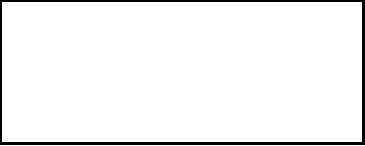
SURFACE PREPARATION
CAUTION
The effectiveness and adherence of a paint finish
Prior to cleaning and stripping, you should
depend upon careful surface preparation. Before you
ensure the aircraft is properly grounded to dissipate
begin to paint, you should remove all soils, lubricants,
any static electricity produced by the cleaning and
and preservatives from the surface. You should treat
stripping operations.
corroded areas and replace defective seam sealants.
Corrosion control is covered in the Aviation
Maintenance Ratings, NAVEDTRA 14022.
Stripping should be accomplished outside
whenever possible. If stripping must be done in a
Paint Removal
hangar or other enclosure, you must have adequate
ventilation.
Paint removal should be accomplished by the
Paint remover may contact adhesives at seals,
mildest mechanical or chemical means. Paint removal
joints, skin laps, and bonded joints. In these areas you
operations at the organizational and intermediate
should mask with approved tapes and papers.
maintenance levels are usually confined to small areas.
Whenever you use paint remover, the procedures
Stripper should be applied liberally with a fiber
outlined in the applicable MIM should be observed.
brush. You should completely cover the surface to a
General stripping procedures are contained in Aircraft
depth of one thirty-second to one-sixteenth of an inch.
Weapons Systems Cleaning and Corrosion Control, NA
The stripper should not be spread in a thin coat. A thin
01-1A-509.
coat will not sufficiently loosen the paint. If the coat is
too thin, the remover may dry on the surface of the
Materials
metal.
All paint removers are toxic and caustic; therefore,
You should allow the stripper to wrinkle and lift the
both personnel and material safety precautions must be
paint. This may take from 10 minutes to 40 minutes,
observed in their use. You should wear eye protection,
depending upon the temperature, the humidity, and the
gloves, and a rubber apron.
condition of the paint.
MIL-R-81294 paint remover is an epoxy. This
You should remove loosened paint and residual
remover will strip acrylic and epoxy finishes
paint remover by washing and scrubbing the surface
satisfactorily. Acrylic windows, plastic surfaces, and
with fresh water, nonmetallic scrapers, fiber brushes, or
rubber products are adversely affected by this material.
abrasive pads. If water spray is available, use a low- to
This material should not be stocked in large quantities
medium-pressure stream of water directly on the
because it ages rapidly and degrades the results of
surface while it is being scrubbed.
stripping action.
After you thoroughly clean the surface, you should
Additional paint removers are discussed in NA
remove the masking materials and remove any residual
07-1-503. Each remover has a specific intended use.
paint.
For example, MIL-R-81294 is used for removing epoxy
Rinse the surface with a freshwater and alkaline
finishes, but it may be damaging to synthetic rubber,
solution (1 part MIL-C-25769 to 9 parts water) to
while another nonflammable water soluble paint
neutralize the paint remover.
remover conforming to MIL-R-18553 is usable in
FLAP BRUSH.--Paint can be mechanically
contact with synthetic rubber. In all cases, you should
removed with a flap brush. The brush consists of many
use the remover that meets the requirements of the job.
nonwoven, nonmetallic nylon flaps bonded to a fiber
General Procedures and Precautions for
core. The brush assembly (fig. 5-29) is made up of a
Stripping
flap brush, flanges, and a mandrel. It should be
operated by a NO LOAD, 3200-rpm, pneumatic drill
General stripping procedures are described in this
motor. The direction of rotation is indicated by an arrow
section. When you are stripping an aircraft surface, you
imprinted on the side of the core. When a flap brush has
should consult the applicable MIM for the specific
been worn down to within 2 inches from the center of
procedures to be used.
the hub, you should replace it. Continued use beyond
this limit may cause gouging due to loss of flexibility of
5-26

